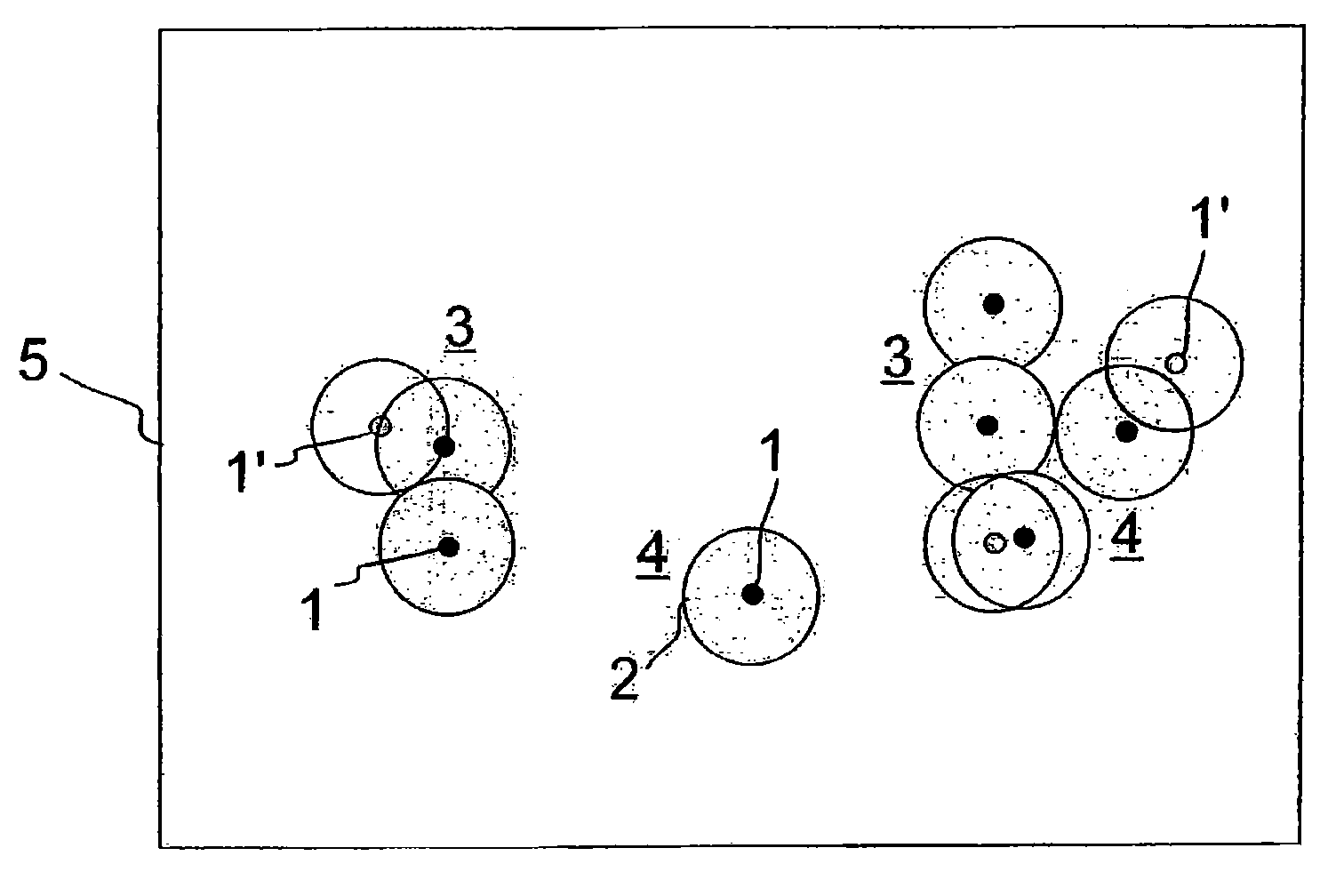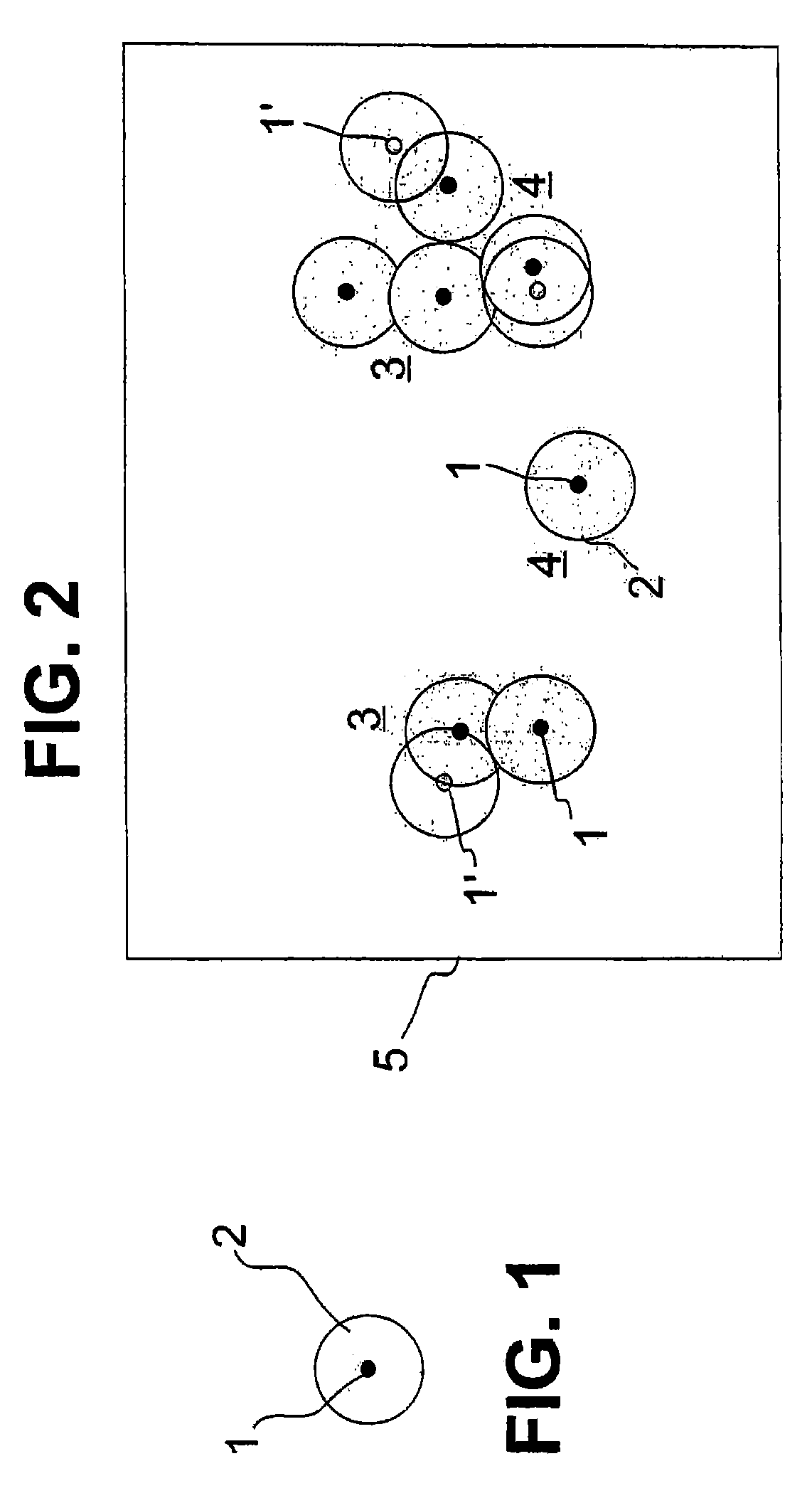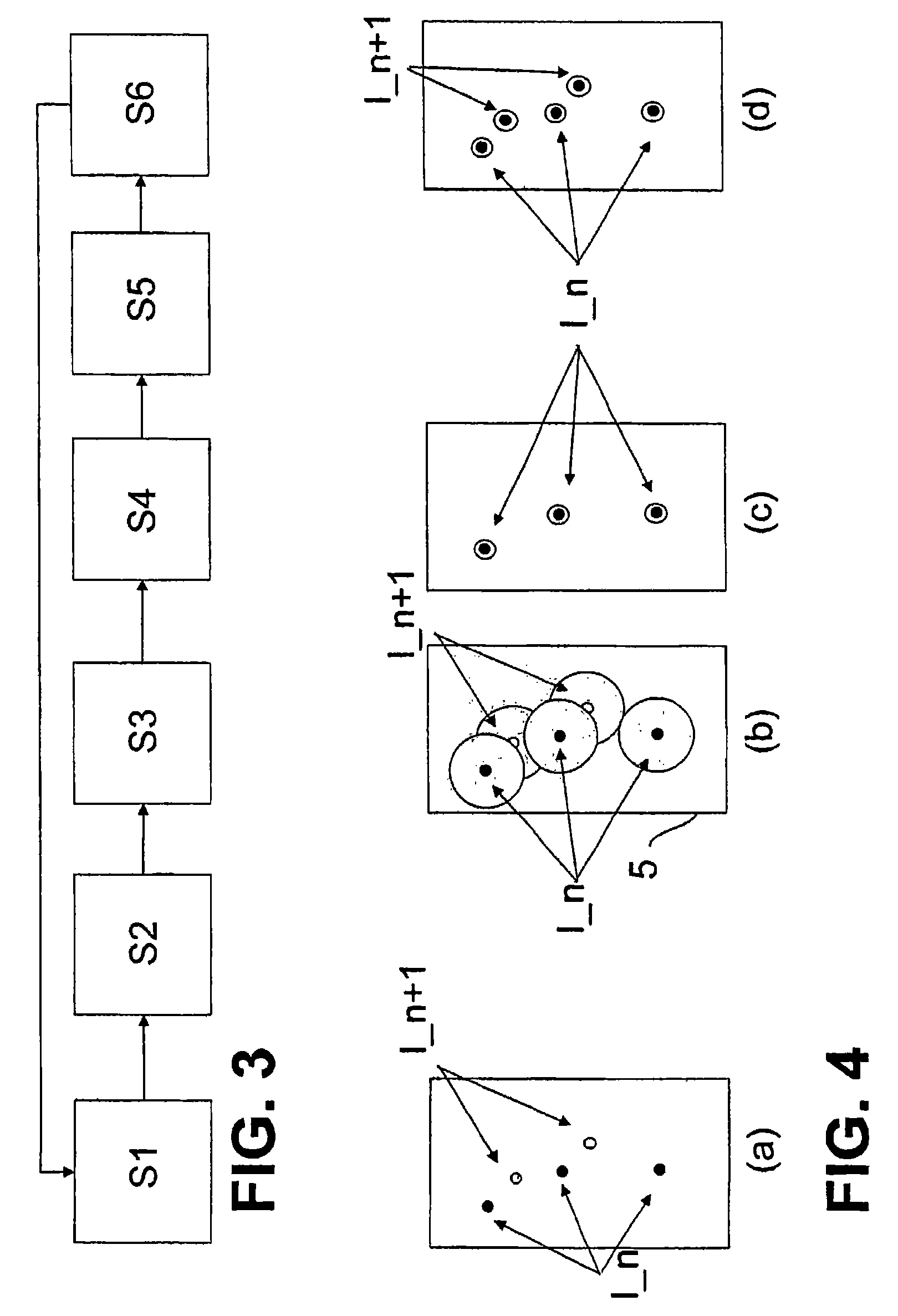High-resolution microscope and method for determining the two- or three-dimensional positions of objects
a high-resolution, microscope technology, applied in the field of microscopy, can solve the problems of limited optical resolution of light microscopes such as lsms, limited diffraction by the laws of physics, and rather extensive imaging period, and achieve the above-described method based on localized high resolution only to surfaces and/or 2 dimensions
- Summary
- Abstract
- Description
- Claims
- Application Information
AI Technical Summary
Benefits of technology
Problems solved by technology
Method used
Image
Examples
Embodiment Construction
[0082]FIG. 1 shows schematically a marker molecule 1, which has been excited for fluorescence. Of course, the detection of fluorescence requires a plurality of excitations, because each excitation yields precisely one fluorescent proton and the detection of radiation requires an integration of many fluorescent protons. The fluorescent radiation emitted by the marker molecules 1 can be detected in a microscope based on physical principles only in a limited optic resolution. Even if the microscope reaches the diffraction limit of the optic resolution the photons of the fluorescent marker molecule 1 are still distributed due to diffraction and thus detected in a diffraction disk 2. The microscope therefore displays an object principally larger than the geometric extension of the marker module 1, drawn in FIG. 1 schematically as a black circle, which is illustrated in FIG. 1 by the diffraction disk 2. The size of the diffraction disk 2 depends on the quality of the microscopy device use...
PUM
| Property | Measurement | Unit |
|---|---|---|
| wavelength | aaaaa | aaaaa |
| wavelength | aaaaa | aaaaa |
| thickness | aaaaa | aaaaa |
Abstract
Description
Claims
Application Information
 Login to View More
Login to View More - R&D
- Intellectual Property
- Life Sciences
- Materials
- Tech Scout
- Unparalleled Data Quality
- Higher Quality Content
- 60% Fewer Hallucinations
Browse by: Latest US Patents, China's latest patents, Technical Efficacy Thesaurus, Application Domain, Technology Topic, Popular Technical Reports.
© 2025 PatSnap. All rights reserved.Legal|Privacy policy|Modern Slavery Act Transparency Statement|Sitemap|About US| Contact US: help@patsnap.com



